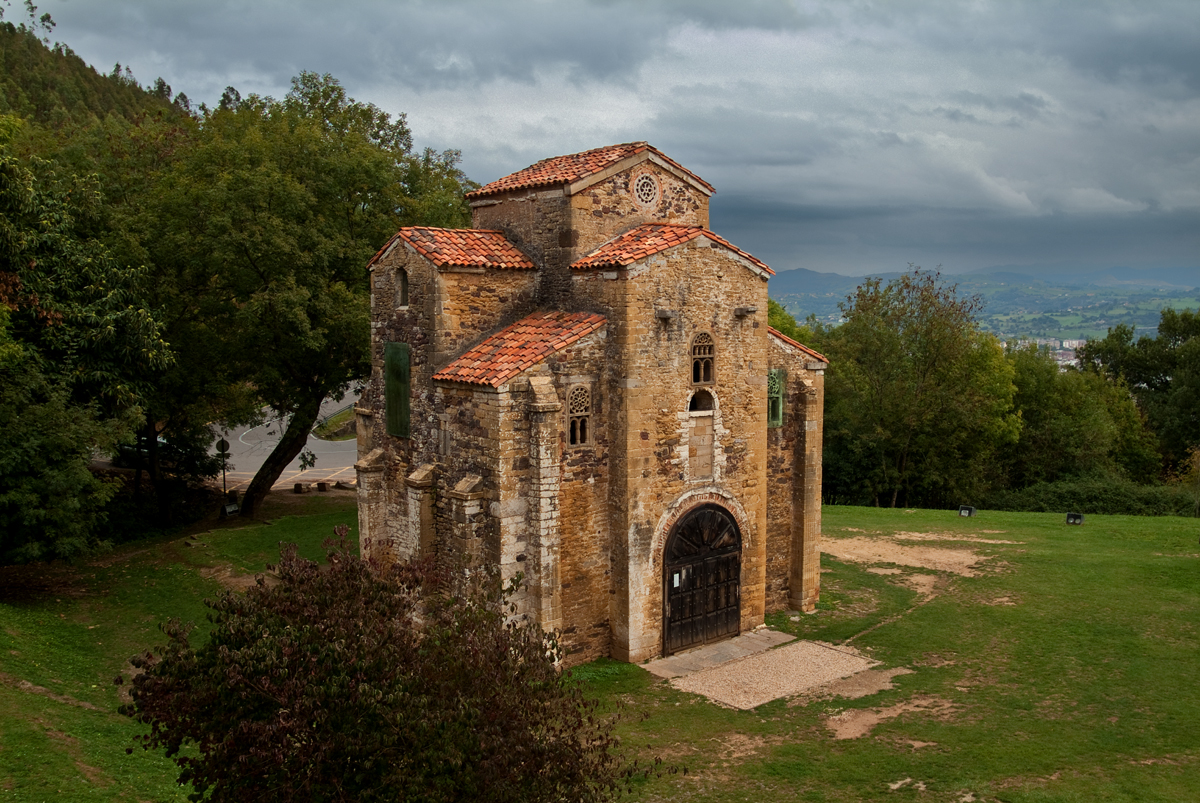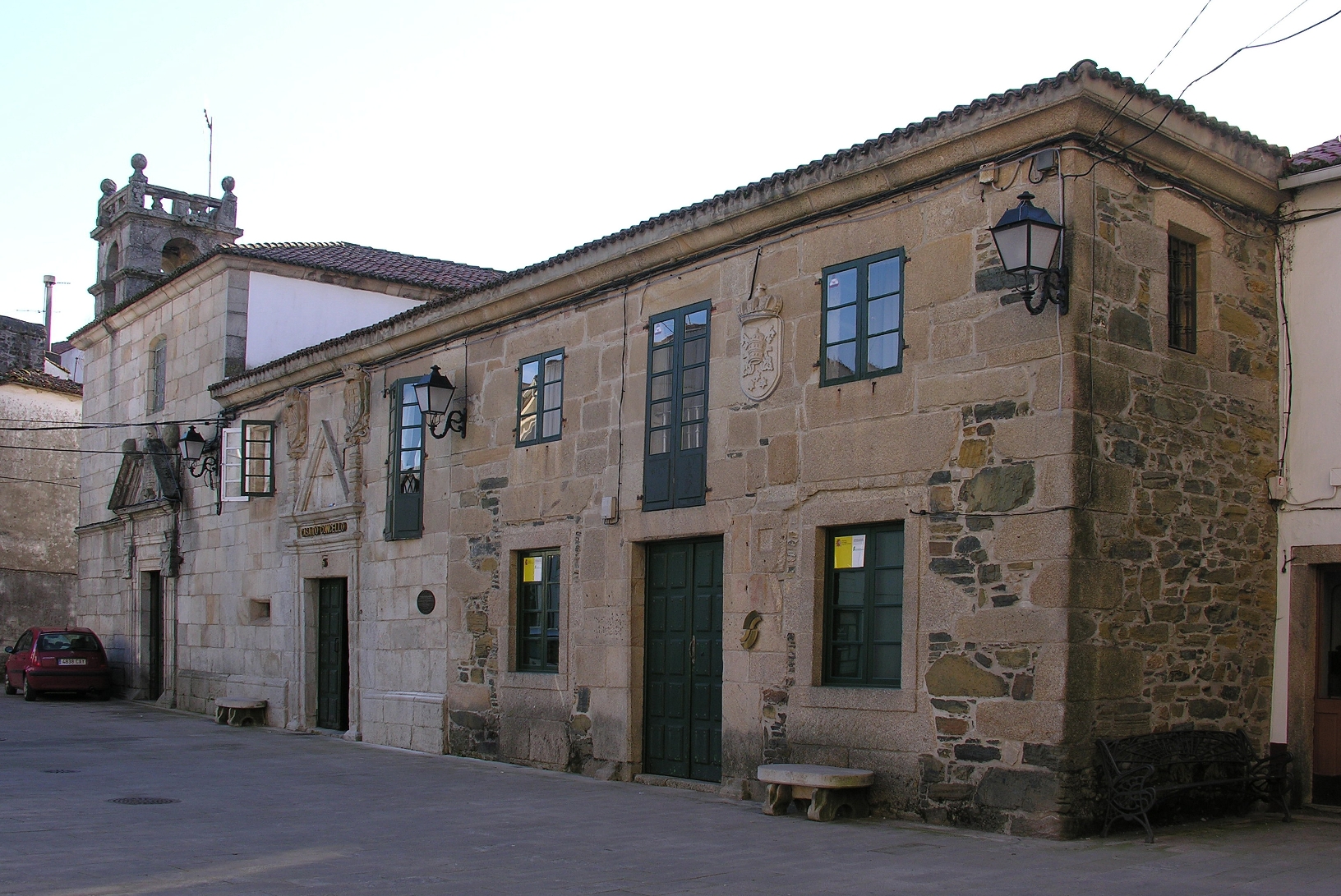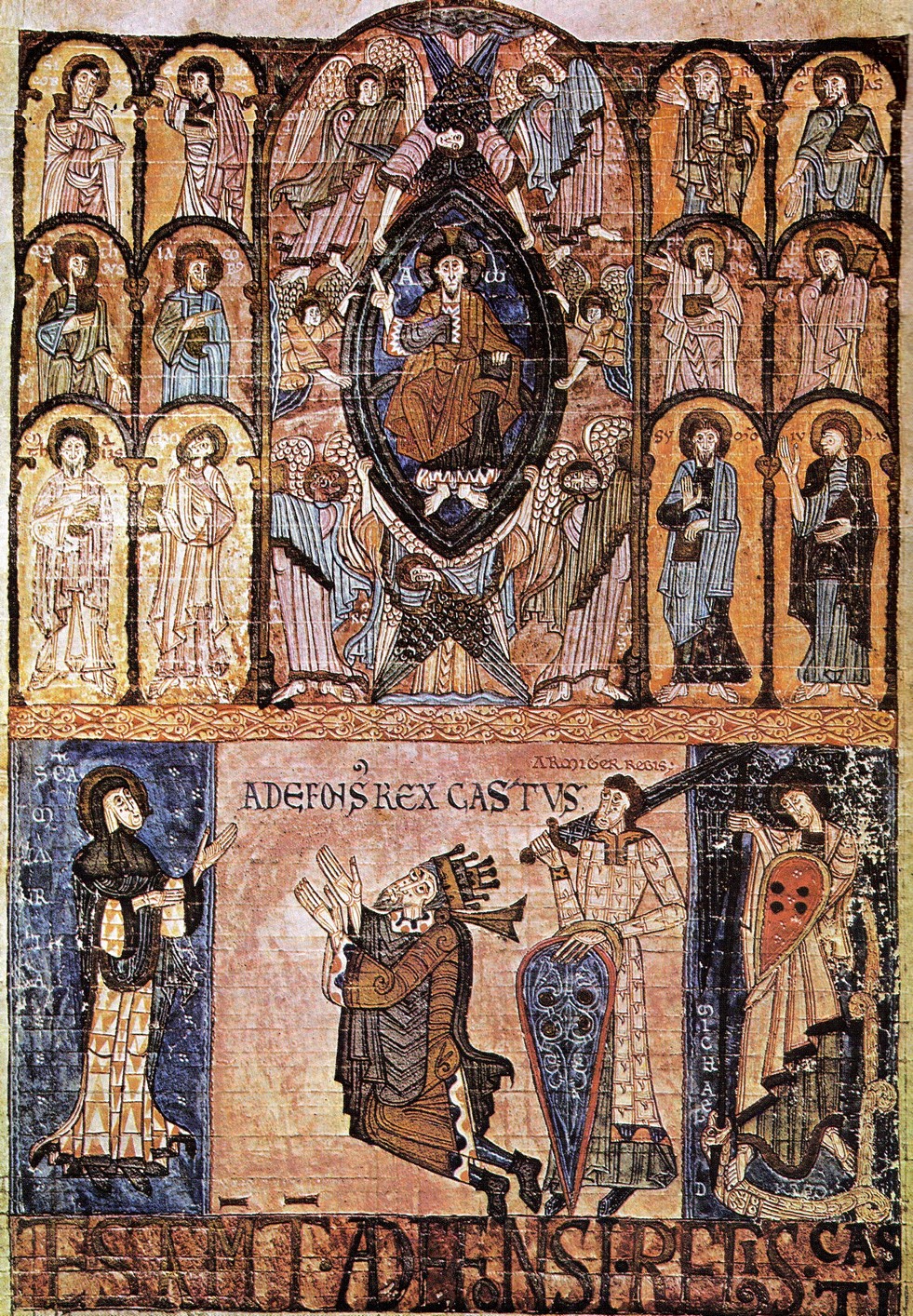|
Camino Primitivo
The Primitive Way (also called Original Way, ) is one of the paths of the Camino de Santiago. It begins in the old Asturian capital of Oviedo and runs west to Lugo and then south to Santiago de Compostela joining the more popular French Way in Melide for the last two hiking days. According to the Confraternity of St James, the Camino Primitivo is approximately 320 km (199 miles) in length. Middle Ages The Camino Primitivo is thought of as the "Original Way" because it is reportedly the path taken by the first reported pilgrim, Alfonso II of Asturias (842), nicknamed ''the Chaste'' (). The King left his capital, Oviedo, in the year 814 to travel to the present location of the city of Santiago de Compostela, at the time known as . Alfonso built the original shrine to Saint James on the spot of the discovery of the remains by Pelayo and Theodemir. Until the city of León was established as both the capital of the Kingdom of León The Kingdom of León was an independent ... [...More Info...] [...Related Items...] OR: [Wikipedia] [Google] [Baidu] |
Pilgrims' Way
A pilgrims' way or pilgrim way is a standard route that pilgrims take when they go on a pilgrimage in order to reach their destination – usually a holy site or place of worship. These sites may be towns or cities of special significance such as Jerusalem, Rome, Santiago de Compostela, Fátima, Lourdes or Einsiedeln, but may also be specific points in the countryside, such as a hill, spring, well, cave or shrine. On the route there are stations where pilgrims can stop and rest, where prayers may be said or Church service, religious services observed. History In the Middle Ages there were three main Christianity, Christian pilgrimage sites: Jerusalem, Rome and Santiago de Compostela in Spain. The large pilgrimage sites were often the graves of important Apostles in the New Testament, apostles. The most famous pilgrims' way today is the one to Santiago de Compostela in Spain, also known as the Way of St. James. Another very old pilgrim way, the Via Francigena, runs from Canterbury ... [...More Info...] [...Related Items...] OR: [Wikipedia] [Google] [Baidu] |
Oviedo
Oviedo () or Uviéu (Asturian language, Asturian: ) is the capital city of the Principality of Asturias in northern Spain and the administrative and commercial centre of the region. It is also the name of the municipality that contains the city. Oviedo is located approximately southwest of Gijón and southeast of Avilés, both of which lie on the shoreline of the Bay of Biscay. Oviedo's proximity to the ocean of less than in combination with its elevated position with areas of the city more than 300 metres above sea level causes the city to have a maritime climate, in spite of its not being located on the shoreline itself. History The Kingdom of Asturias began in 720, with the Visigothic aristocrat Pelagius of Asturias, Pelagius's (685–737) revolt against the Muslims who at the time were occupying most of the Iberian Peninsula. The Umayyad conquest of Hispania, Moorish invasion that began in 711 had taken control of most of the peninsula, until the revolt in the nort ... [...More Info...] [...Related Items...] OR: [Wikipedia] [Google] [Baidu] |
Lugo
Lugo (, ) is a city in northwestern Spain in the autonomous communities of Spain, autonomous community of Galicia (Spain), Galicia. It is the capital of the Lugo (province), province of Lugo. The municipality had a population of 100,060 in 2024, making it the fourth most populous city in Galicia. Lugo is the only city in the world to be surrounded by completely intact Roman walls of Lugo, Roman walls, which reach a height of along a circuit ringed with 71 towers. The walk along the top is continuous around the circuit and features ten gates. The 3rd century Roman walls, the only one of its kind in the world, are protected by UNESCO as a World Heritage Site. The Roman bridge of Lugo, city's historic bridge over the Minho (river), Miño is also essentially of Roman date. The city of Lugo is along the Camino Primitivo path of the Camino de Santiago. Population The population of the city in 2018 was 98,026 inhabitants, which has been growing constantly since the first census in 184 ... [...More Info...] [...Related Items...] OR: [Wikipedia] [Google] [Baidu] |
Santiago De Compostella
Santiago de Compostela, simply Santiago, or Compostela, in the province of A Coruña, is the capital of the autonomous community of Galicia, in northwestern Spain. The city has its origin in the shrine of Saint James the Great, now the Cathedral of Santiago de Compostela, as the destination of the Way of St. James, a leading Catholic pilgrimage route since the 9th century. In 1985, the city's Old Town was designated a UNESCO World Heritage Site. Santiago de Compostela has a very mild climate for its latitude with heavy winter rainfall courtesy of its relative proximity to the prevailing winds from Atlantic low-pressure systems. Toponym According to Richard A. Fletcher, scholars now agree that the origin of the name Compostela comes from the Latin ''compositum tella'', meaning a well-ordered burial ground, possibly referring to an ancient burial ground on the site of the Church of Santiago de Compostela that pre-dates the Christian building. is the local Galician evolution ... [...More Info...] [...Related Items...] OR: [Wikipedia] [Google] [Baidu] |
Camino Francés And Routes Of Northern Spain
Camino may refer to: Places * Camino, Piedmont, Italy, a ''comune'' (municipality) * Camino, Veneto, Italy, a village * Monte Camino, a peak in Piedmont, Italy * Camino, California, United States, a census-designated place People * Cecilia Magni Camino (1956–1988), Chilean guerilla leader and sociologist * Giuseppe Camino (1818–1890), Italian painter * Jaime Camino (1936–2015), Spanish film director and screenwriter * Julián Camino (born 1961), Argentine former footballer * Paco Camino (1940–2024), Spanish bullfighter * Rafael Camino (born 1969), Spanish former bullfighter, son of Paco Camino * Renae Camino (born 1986), Australian basketball player * Rubén Camino (born 1959), Cuban retired pole vaulter * Víctor Camino Miñana (born 1994), Spanish politician * Camino Garrigó (born 1954), Spanish film actress * Da Camino or Camino, an Italian noble family ** Rizzardo IV da Camino (1274–1312), Italian Lord of Treviso and military leader Film and television * ''Cam ... [...More Info...] [...Related Items...] OR: [Wikipedia] [Google] [Baidu] |
World Heritage Committee
The World Heritage Committee is a committee of the United Nations Educational, Scientific and Cultural Organization that selects the sites to be listed as UNESCO World Heritage Sites, including the World Heritage List and the List of World Heritage in Danger, defines the use of the World Heritage Fund and allocates financial assistance upon requests from States Parties. It comprises representatives from 21 state parties that are elected by the General Assembly of States Parties for a four-year term. These parties vote on decisions and proposals related to the World Heritage Convention and World Heritage List. According to the World Heritage Convention, a committee member's term of office is six years. However many States Parties choose to voluntarily limit their term to four years, in order to give other States Parties an opportunity to serve. All members elected at the 15th General Assembly (2005) voluntarily chose to reduce their term of office from six to four years. D ... [...More Info...] [...Related Items...] OR: [Wikipedia] [Google] [Baidu] |
List Of World Heritage Sites In Europe
A World Heritage Site is a place that is listed by the United Nations Educational, Scientific and Cultural Organization (UNESCO) as having special cultural or physical significance. General lists * Former UNESCO World Heritage Sites * List of World Heritage in Danger * List of World Heritage Sites by year of inscription * World Heritage Sites by country * Lists by continent List of World Heritage Sites in Africa, Africa *List of World Heritage Sites in North Africa **List of World Heritage Sites in Algeria **List of World Heritage Sites in Egypt **List of World Heritage Sites in Libya **List of World Heritage Sites in Morocco **List of World Heritage Sites in Sudan **List of World Heritage Sites in Tunisia *Lists of World Heritage Sites in Western Africa **List of World Heritage Sites in Benin **List of World Heritage Sites in Burkina Faso **List of World Heritage Sites in Cape Verde **List of World Heritage Sites in Gambia **List of World Heritage Sites in Guinea **List of Wor ... [...More Info...] [...Related Items...] OR: [Wikipedia] [Google] [Baidu] |
Camino De Santiago
The Camino de Santiago (, ; ), or the Way of St. James in English, is a network of pilgrims' ways or pilgrimages leading to the shrine of the apostle James in the cathedral of Santiago de Compostela in Galicia in northwestern Spain, where tradition holds that the remains of the apostle are buried. Pilgrims follow its routes as a form of spiritual path or retreat for their spiritual growth. It is also popular with hikers, cyclists, and organized tour groups. Created and established in the beginning of the 9th century following the discovery of the relics of Saint James the Great, the Way of St. James became a major pilgrimage route of medieval Christianity from the 10th century onwards. Following the end of the Granada War in 1492, under the reign of the Catholic Monarchs Ferdinand II of Aragon and Isabella I of Castile, Pope Alexander VI officially declared the Camino de Santiago to be one of the "three great pilgrimages of Christendom", along with Jerusalem and the '' Via ... [...More Info...] [...Related Items...] OR: [Wikipedia] [Google] [Baidu] |
Santiago De Compostela
Santiago de Compostela, simply Santiago, or Compostela, in the province of Province of A Coruña, A Coruña, is the capital of the autonomous communities of Spain, autonomous community of Galicia (Spain), Galicia, in northwestern Spain. The city has its origin in the shrine of Saint James the Great, now the Cathedral of Santiago de Compostela, as the destination of the Way of St. James, a leading Catholic pilgrimage route since the 9th century. In 1985, the city's Old Town was designated a UNESCO World Heritage Site. Santiago de Compostela has a very mild climate for its latitude with heavy winter rainfall courtesy of its relative proximity to the prevailing winds from Atlantic Ocean, Atlantic low-pressure systems. Toponym According to Richard A. Fletcher, scholars now agree that the origin of the name Compostela comes from the Latin ''compositum tella'', meaning a well-ordered burial ground, possibly referring to an ancient burial ground on the site of the Church of Santiago de ... [...More Info...] [...Related Items...] OR: [Wikipedia] [Google] [Baidu] |
French Way
The French Way (, , ) follows the GR 65 and is the most popular of the routes of the Way of St. James (), the ancient pilgrimage route to Santiago de Compostela in Galicia, Spain. It runs from Saint-Jean-Pied-de-Port on the French side of the Pyrenees to Roncesvalles on the Spanish side and then another 780 km on to Santiago de Compostela through the major cities of Pamplona, Logroño, Burgos and León. A typical walk on the ''Camino francés'' takes at least four weeks, allowing for one or two rest days on the way. Some travel the Camino on bicycle or on horseback. Paths from the cities of Tours, Vézelay, and Le Puy-en-Velay meet at Saint-Jean-Pied-de-Port. A fourth French route originates in Arles, in Provence, and crosses the French–Spanish frontier at a different point, between the Pyrenees towns of Somport and Canfranc. This fourth route follows the Aragonese Way and joins the French Way at Puente la Reina, south of Pamplona, in Navarre, about 700 kilometres ... [...More Info...] [...Related Items...] OR: [Wikipedia] [Google] [Baidu] |
Melide, A Coruña
Melide () is a municipality in the A Coruña (province), province of A Coruña in the autonomous region of Galicia (Spain), Galicia in northwest Spain. It belongs to the comarca of Terra de Melide. It has an area of 101 km2 and a population of 7,734 inhabitants mostly spread among its 26 civil parish, parishes. It has an elevation of 456 meters. Demography History The history of this village, since its foundation in the 10th century, is deeply linked with the pilgrimage to Santiago de Compostela as it is where two separate paths French Way and Camino Primitivo of the Camino de Santiago link up. In 1320 Melide obtained from the Archbishop of Santiago de Compostela, Archbishop of Santiago, Berenguel de Landoira, the privilege of building up a castle, fortressing the village, and charging taxes. In 1467 ''"os irmandiños"'' opposed the Archbishop Alonso de Fonseca y Acevedo, Alonso II Fonseca and started a series of fights against its power. During this riot the walls o ... [...More Info...] [...Related Items...] OR: [Wikipedia] [Google] [Baidu] |
Alfonso II Of Asturias
Alfonso II of Kingdom of Asturias, Asturias (842), nicknamed the Chaste (), was the king of Asturias during two different periods: first in the year 783 and later from 791 until his death in 842. Upon his death, Nepotian of Asturias, Nepotian, a family member of undetermined relation, attempted to usurp the crown in place of the future Ramiro I of Asturias, Ramiro I. During his reign, which covered a span of 51 years, Alfonso discovered the supposed tomb of St. James the Great (called in Spanish) in the town of Compostela, which later became known as the city of Santiago de Compostela. He was the son of Fruela I of Asturias, Fruela I and Munia, a Basque people, Basque woman captured and brought back to Asturias by the former following a military campaign. Early life He was born in Oviedo in 759 or 760. He was put under the guardianship of his aunt Adosinda after his father's death, but one tradition relates his being put in the Monastery of San Xulián de Samos. He was the ... [...More Info...] [...Related Items...] OR: [Wikipedia] [Google] [Baidu] |




